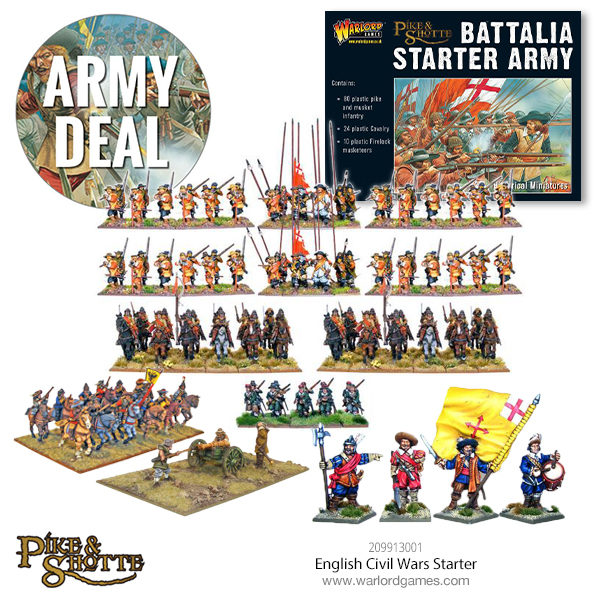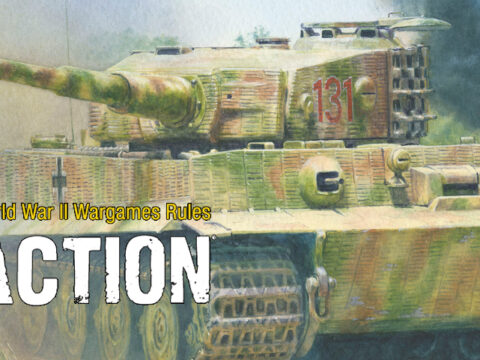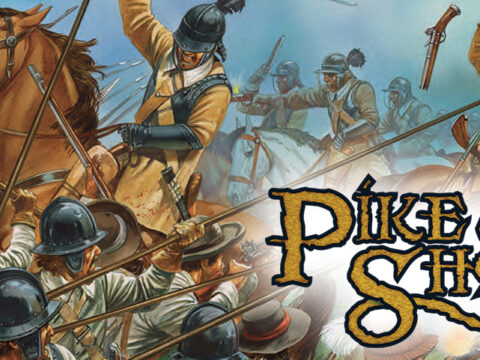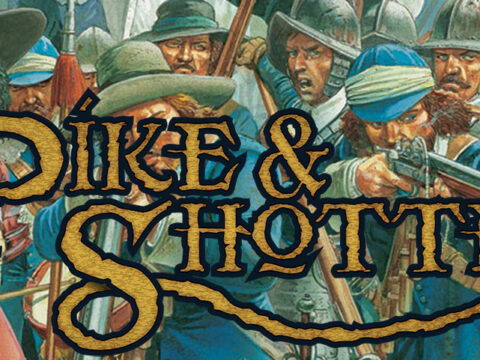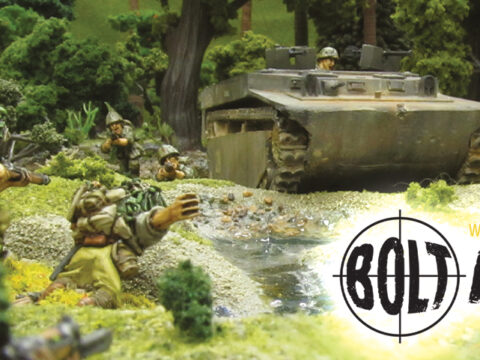Our new To Kill a King Pike & Shotte supplement is massive, so massive that it has 15 battles that span all of the English Civil Wars, each includes the forces that took part, a battle map and brief history surrounding it – lets take a look:
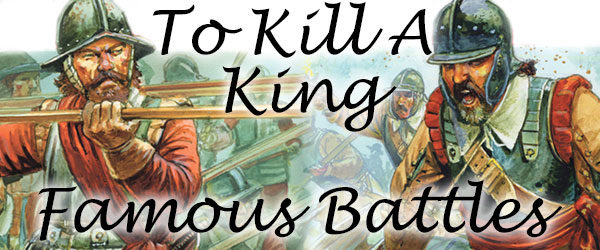
Battle of Brentford
The first scenario featured in the book is the Battle of Brentford which took place on the 12th of November 1642. Royalists, under the command of Prince Rupert, were ordered to capture the vital bridge at Brentford. He met a resistance in the town under the command of James Quarles who acted in the place of Denzil Holles. The Parliamentarians attempted to hold of the Royalists forces despite being woefully outnumbered, but in the end, with sheer numbers, the Royalists forced the Parliamentarians out, making them flee the town which resulted in a fair few drowning in the Thames or becoming captured.
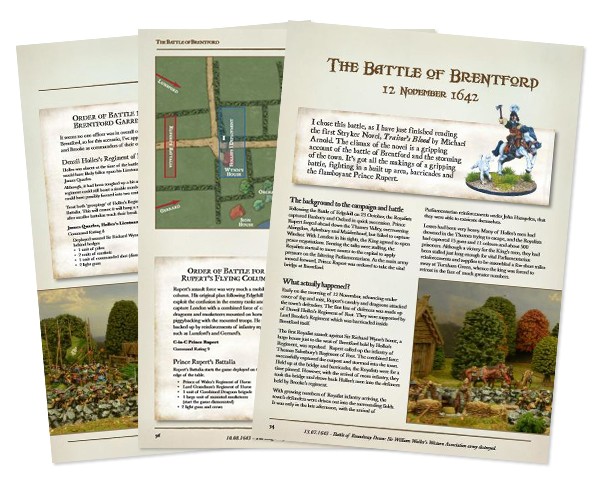
You can find this battle on pages 54-56!
Battle of Chalgrove field
The Battle of Chalgrove field took place on the 18th of June 1643. Prince Rupert caught word of a Parliamentarian pay convoy carrying £20,000 however after an initial hunt, he couldn’t find it. Frustrated, Prince Rupert sacked Parliamentarian quarters at Chinor and Postcombe before retreating to Oxford. However he was being chased by cavalry led by Sir John Stapleton accompanied by the famous Colonel John Hampden. Once Prince Rupert caught wind of his followers he turned round and met them head on with a furious charge, crushing the Parliamentarian force and mortally wounding John Hampden, a damaging loss for Parliamentarian morale.
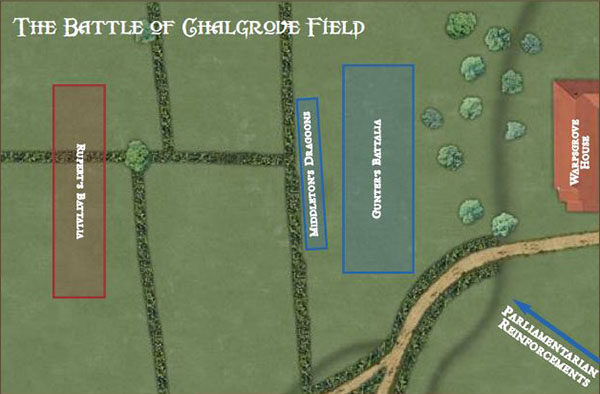
You can find this battle on pages 57-60!
Battle of Adwalton moor
Lord Fairfax and his son, Sir Thomas, saw the Earl of Newcastle, commanding a Royalist force, march toward Bradford. Realising that Bradford couldn’t withstand a siege, Lord Fairfax decided the only way his force could win was by ambushing the impeding Royalist force.
On the 30th of June 1643, Lord Fairfax was winning convincingly, using the terrain to his advantage. All seemed lost for the Royalists until the left Parliamentarian flank broke under a charge of cavalry, pikes and artillery support. The Royalist cavalry reaped havoc on the Parliamentarian forces and the army broke.
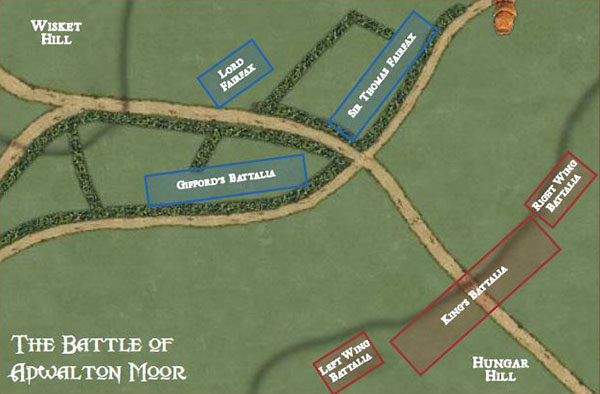
You can find this battle on pages 61-63!
Battle of Lansdown hill
On the 5th of July 1642, Ralph Hopton was poised to advance out of the South west which was when his path was impeded by Sir William Waller’s army, based in Bath. After numerous skirmishes, Waller retreated to Lansdown Hill. His main troops held the helm with support of Dragoons and musketeers which were on the flanks. Hopton met Wallers forces head-on, with Sir Bevil Grenville leading his Cornish men. After withstanding many casualties, including Grenville, they still managed to push the Parliamentarian forces away from the hill. Many attempts were made to take it back, but they all failed, in the dead of night, the Parliamentarian forces pulled out.
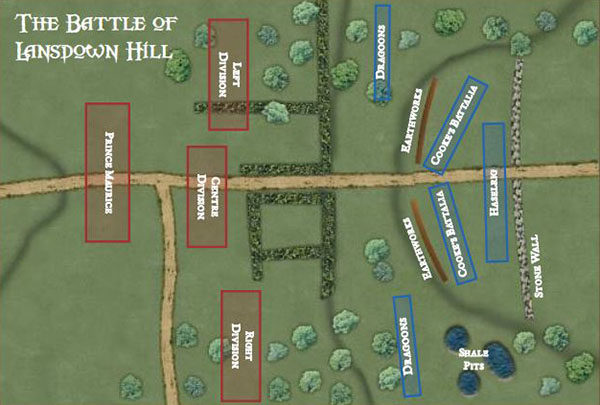
You can find this battle on pages 64-66!
Battle of Nantwich
On the 18th of January 1644, Nantwich, the last major parliamentarian base, came under attack. They managed to repel their attackers and were further relieved that they knew Lord Fairfax was on his way to reinforce them with a force of 4,200 men.
Knowing that Fairfax was on his way Lord Byron was maneuvering when bad weather destroyed a bridge, which split his force in two. The second half, commanded by Colonel Gibson, deployed around Acton church. Fairfax marched and met Gibson’s force head on whilst keeping Lord Byron’s cavalry at bay with his own. Lord Gibson’s force held strong until a force from Nantwich broke through a reserve regiment that were meant to keep them at bay. This resulted in Lord Byron’s army routing and becoming surrounded at Acton Church, they surrendered to Lord Fairfax’s terms.
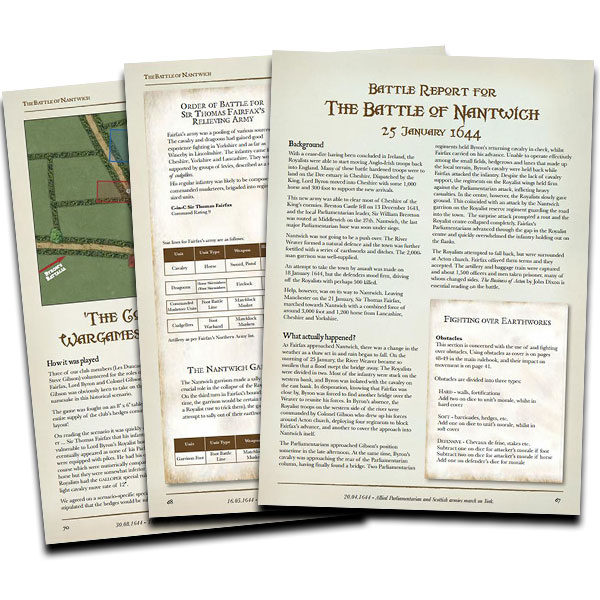
You can find this battle on pages 67-69, this battle is also a battle report!
Battle of Cheriton
Early in March 1644, Ralph Hopton’s force was reinforced by troops from Oxford, under the command of the Earl of Forth who was commander-in-chief of the Royalist armies. However due to illnesses, Hopton remained in command and marched for south of London.
Sir William Waller was ordered to stop them with support from the Earl of Essex. After numerous advances and feints both armies found themselves near the small town of Cheriton. On the 19th of March 1644, Hopton attacked the small town and managed to get a foot hold in it. After numerous hours of consistent charges and counter charges, the Royalists were losing ground and decided on a general retreat. This battle is also considered the first decisive victory for the Parliamentarians.
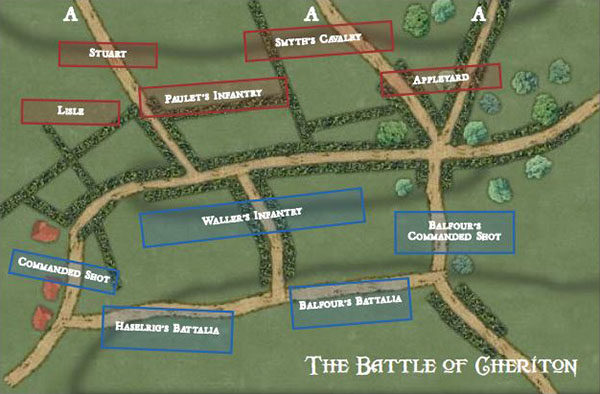
You can find this battle on pages 94-96!
Battle of Ormskirk
Prince Rupert, after his defeat at Martson Moor, retreated towards Lancashire in an attempt to rebuild their hold over northwest England. Rupert set about recruiting more men, making his force some 2,500 horse and roughly 4,500 men strong.
From Manchester, Sir John Meldrum was tasked to hunt them down with a force of some 2,000 horse and 3,000 men. They eventually forced Prince Rupert’s hand and engaged the King’s forces on the 20th of August, 1644. The Cavaliers were caught by surprise and quickly formed into a battle line, however Meldrum’s infantry forced them into disarray and the Parliamentarian cavalry charge quickly routed them making this a quick victory for Meldrum’s forces.
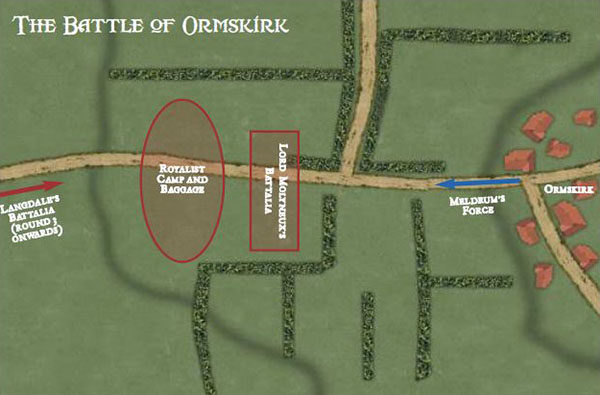
You can find this battle on pages 97-98!
Battle of Newbury
Fresh from victory, the King moved his forces into central England to secure his important garrisons, whilst also waiting for Prince Ruperts reinforcements. The Earl of Essex was determined to stop him with the combined armies of the Eastern Association, Waller’s army and his own forces rebuilt and equipped after their defeats in Cornwall. The King’s forces held three strong points. The village of Speen in the west, Donnington Castle in the north and Shaw House in the east.
On the 27th of October, 1644, Waller flanked and attacked Spleen, the attack was reduced to a stand still after initial success. Manchester launched a delayed attack which was beaten back. Although the Royalists held their own, the King’s High Command knew they couldn’t last and decided to retreat towards Oxford. The Parliamentarians attempted to pursue them, but due to incompetent command and mix decisions, they didn’t catch up.
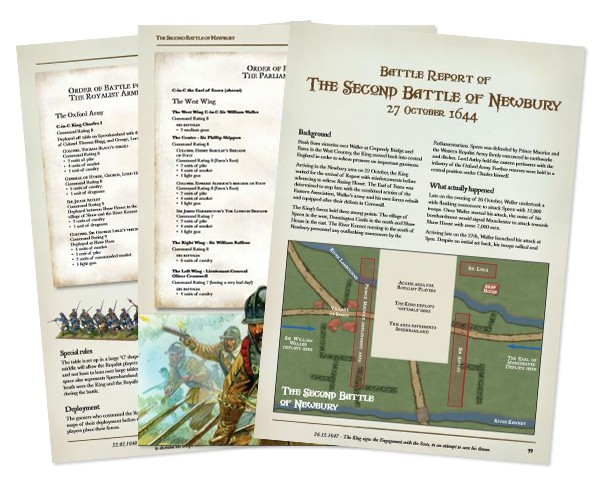 You can find this battle on pages 99-103!
You can find this battle on pages 99-103!
Battle of Wistanstow
By the summer of 1645, the Shropshire Royalists have been forced on the defensive whilst the Parliamentarians took the initiative and became more aggressive. The Royalists also had to thin their garrisons as troops were sent to reinforce King Oxford’s army, the Parliamentarians continuing their campaign captured the Stokesay caslte. On the 8th of June, 1645, Royalist senior Commander Sir Michael Woodhouse made plans to recapture the castle. The Royalists made contact with the Parliamentarians from the village of Wistanstow, the roundheads broke through Cavalier advanced guard of cavalry and with a combined assault defeated the rest of the force.
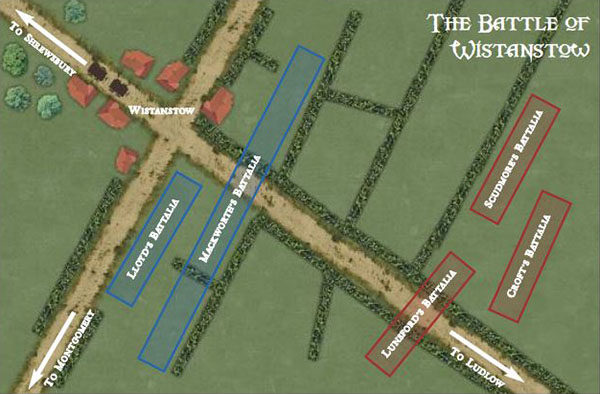
You can find this battle on pages 104-106!
Battle of Torrington
The Battle of Torrington was the final major battle of the Civil War in the South West and it marked the effective end of the south-western campaign and Royalist resistance in the West Country. A Royalist army led by Hopton advanced into Devon to help relieve a siege on Exeter and took up defensive positions. On the 16th of February, 1646, Sir Thomas Fairfax forces tangled with Royalist dragoons and attempted to test the Royalist defenses, which eventually turned into a full fight. With the clash of pikemen lasting 2 hours, the Cornish men eventually retreated but bitter fighting still continued. Royalists stockpiled a lot of their gunpowder in the Torrington church. A stray spark set the stores alight in a spectacular explosion – effectively putting the end to the battle leaving the Royalists to retreat into the night.
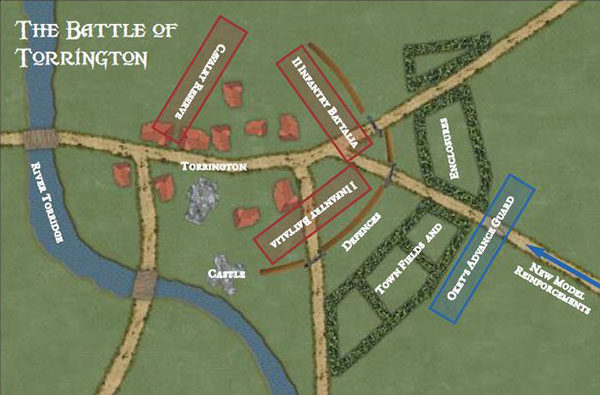
You can find this battle on pages 107-109!
Battle report of Inverlocky
Following a series of victories in 1644, Montrose, Royalist General in Scotland, decided to bring the war home to the Campbells. Invading the Campbell area of the south western highlands, the Royalists sacked the clan’s capital of Inverary in mid January 1645. Montrose became aware that a Covenanter army of some 5,000 men under the command of the Earl of Seaforth was blocking his escape at Inverness. Furthermore, Argyll, with a force of 3,000 Campbell clansmen men, was 30 miles behind him at Inverlochy. Montrose decided to bring the fight to Argyll.
Montrose took his small army on one of the greatest flanking marches in Scottish military history over some of the most inhospitable and wildest terrain in the British Isles. And on the day of 2nd of February, 1645, Montrose attacked Argyll’s forces. Due to positioning by the clansmen, the flanks suffered horrendous heavy fire and casualties After a fierce charge, they were forced into a rout. Montrose then got his centre to meet the clansmen and after some brutal fighting, the rout turned into a massacre.
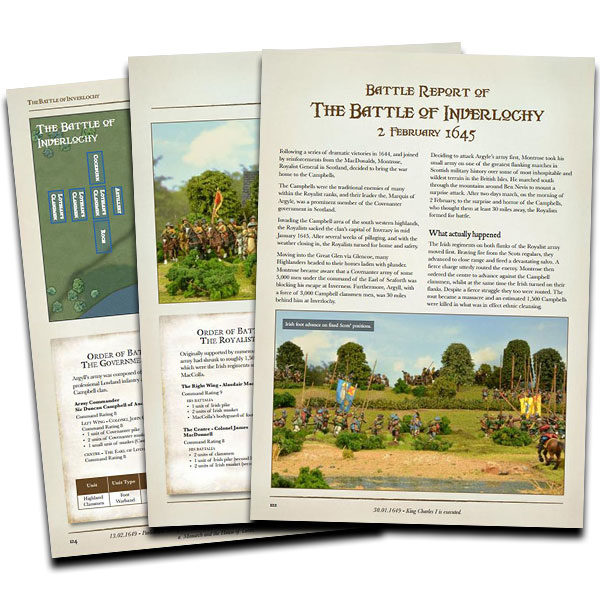
You can find this battle on pages 122-125!
Battle of Aberdeen
Montrose decided to advance on Aberdeen and on the morning of 13th of September, 1644 he sent messenger and drummer under a flag of truce to demand the surrender of the city, this was duely rejected. Additionally, the drummer was shot in the back – angered by this, Montrose ordered a general assault and that no quarter should be offered.
After skirmishing, government cavalry charged the Irish infantry, opening their ranks, the Irish infantry let the cavalry through and fired a volley into their backs. Repeating the same thing on the other flank, the centres of both armies clashed, with the result of the Covenanters routing.
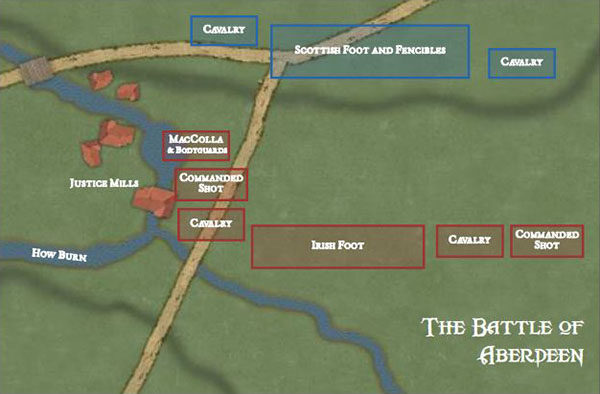
You can find this battle on pages 126-128!
Battle of Benburb
In response to the outbreak of the rebellion in Ireland, Scotland sent an army to protect Scottish settlers there. There was a move to the south against the Irish confederate leader Owen Roe O’Neil, O’Neil mainly used guerrilla warfare until he finally faced the Scottish head on. On the 5th of June, 1646 the Irish deployed on high ground, the Scots formed up with their back to the Blackwater River. Anglo-Scots cavalry charged the Irish foot only to flounder against determined Irish resistance. British fatigue and the fighting quality of the Irish foot decided the day with the Anglo-Scots retreating and suffering heavy causalities in doing so.
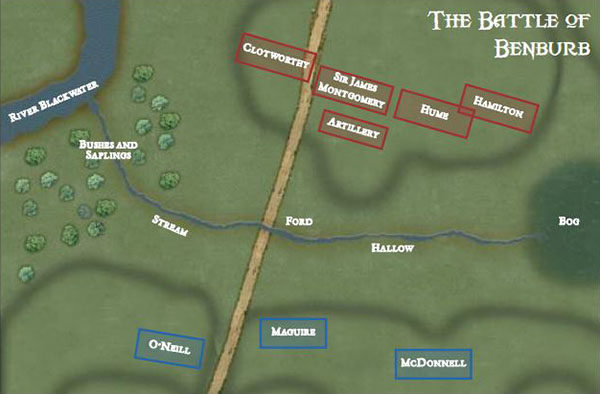
You can find this battle on pages 129-131!
Battle of Winwick pass
After suffering numerous losses the Scots rapidly fell back, tired but determined, they stopped at Winwick pass to make a valiant stand against the English. The pass was extremely defenseable as the English vanguard, musketeers and dragoons attacks failed. On the 19 of August, 1648, local men showed Cromwell a way to outflank the defenses. With a coordinated effort, Cromwell launched a flank attack, the Scots attempted to counter charge, but failed and routed. Many Scots were cut off from retreating with them so they fell back to Winwick church to make a last stand.
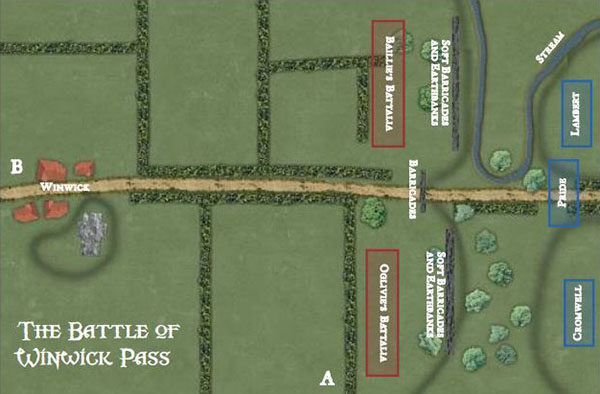
You can find this battle on pages 132-135!
Storming of Cirencester
Gloucestershire was essential during the war, a vital supply link for the Royalists. Cicrencester was a large play maker in the control of Gloucestershire, and Prince Rupert was tasked to capture it. On the 2nd of February, 1643, Prince Rupert gave the order to attack. After a run-in with some ordnance, Prince Rupert led his cavalry forward and assaulted the town. Many defenders remained in the houses but they still suffered heavily, all strongpoints in the town were rushed letting more Royalists flood in and toppling the Parliamentarian defenses.
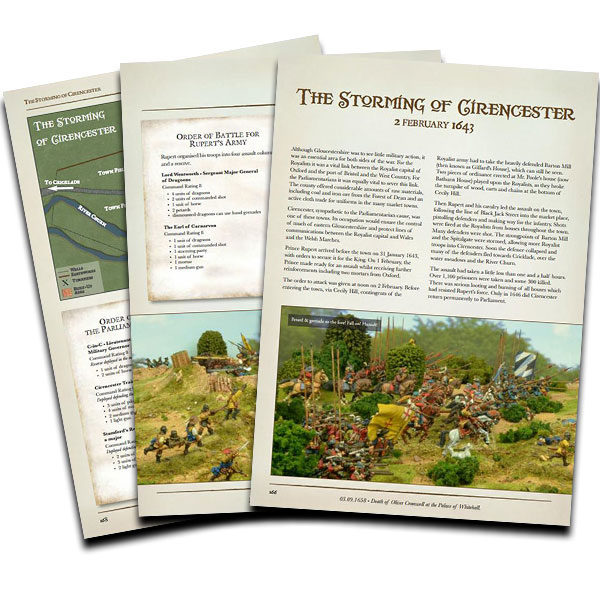
You can find this battle on pages 166-168!
Come grab your copy of To Kill a King here!
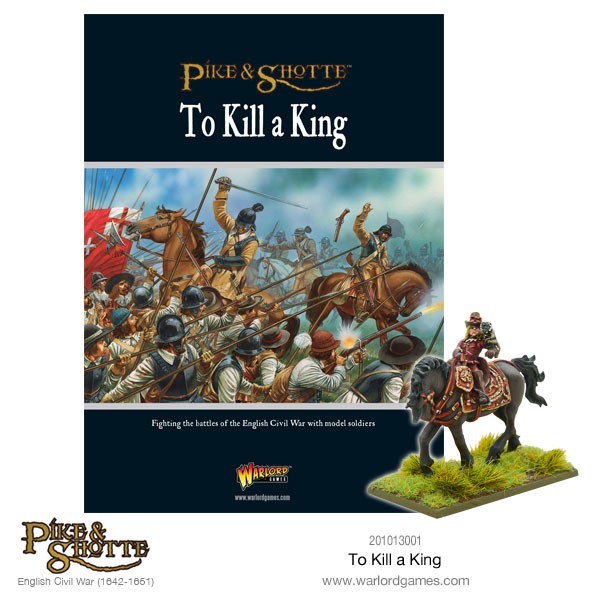
English Civil War Roundhead/Cavalier Starter!
A perfect start to civil wars, grab this set and you can make either Roundhead or Cavaliers!
